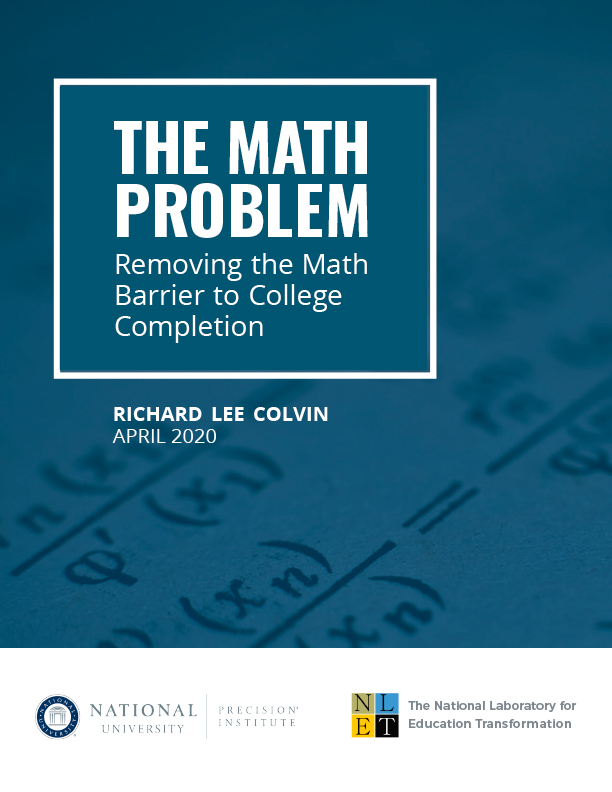“The Math Problem: Removing the Math Barrier to College Completion,” by noted education writer Richard Lee Colvin, is based on dozens of interviews he conducted with math department chairpersons and professors, describing how they are implementing AB 705, California legislation ordering community colleges to eliminate most developmental education classes and use new ways to determine placement into college-level coursework, as well as California State University’s Executive Order 1110, which took the same position.
The Precision Institute of National University commissioned Colvin to write the report on implementation of these policies to better understand the experimentation occurring on community college and university campuses and identify promising practices as well as areas needing more attention. The report was released jointly by National University and the National Laboratory for Education Transformation (NLET).
The far-reaching policies described in the report—to raise graduation rates by eliminating most developmental mathematics classes at its community colleges and throughout the California State University system—have led to a variety of campus-level responses without a comprehensive plan to monitor or improve student outcomes.
The legislation and the Executive Order set in motion a rapid redesign of courses, curricula and majors as well as decisions about staffing, advising, scheduling and how best to support students. That support can take many forms: providing students with just-in-time help with a particular skill by either the professor or embedded tutors; requiring students to enroll in a companion support course that gives students extra time and attention to get up to speed; providing one-on-one or group tutoring by a graduate student or advanced undergraduates; or connecting students to online platforms that use artificial intelligence to infer what content and in what format will be most helpful to students.
The result is that many more students are enrolling directly in college-level classes, and colleges are working in a variety of ways to help them polish their skills, refresh their knowledge and keep up with their classmates.
Numerous states, led by bold actions in California, have abolished placement tests and eliminated prerequisite developmental math courses, either by legislative mandate or by executive order. In their place, multiple measures of prior learning are being used to place students in college-level math courses wherever possible. While this method has been shown to increase the chances of students completing math classes in the short-term, it has yet to be determined whether it adequately prepares them to succeed in more advanced classes, especially in math-intensive fields such as the sciences and engineering.

